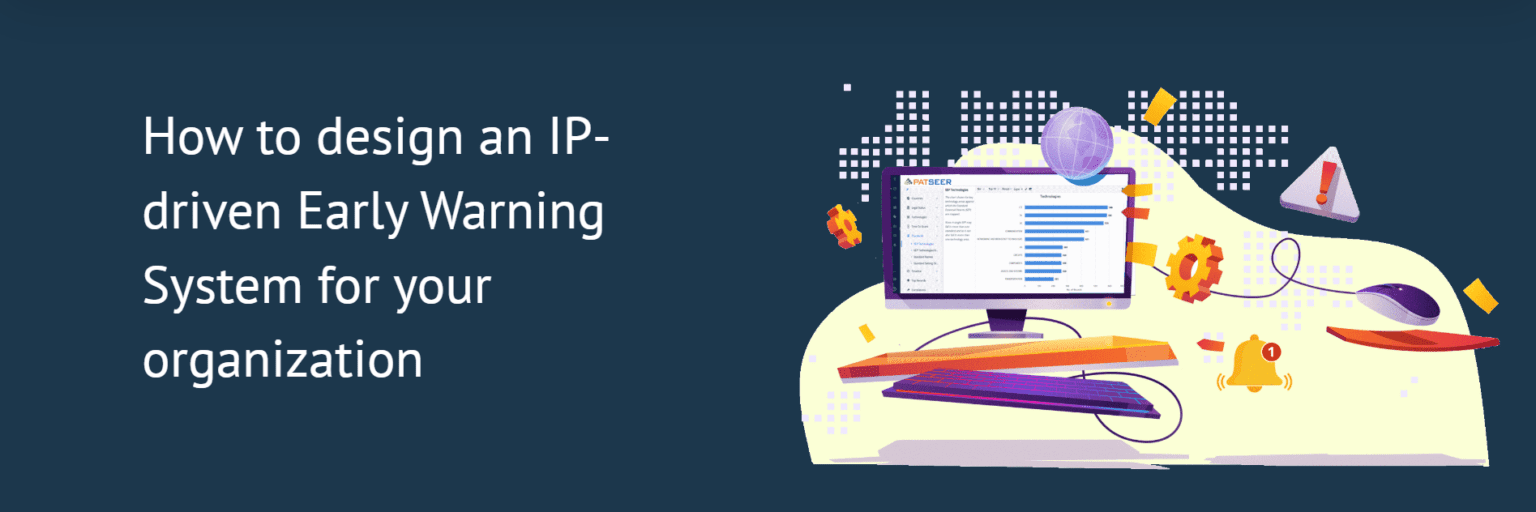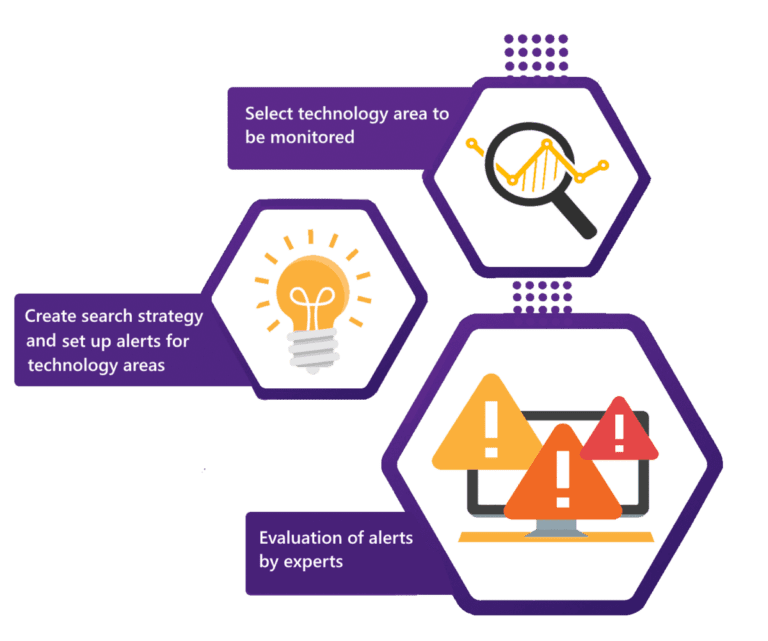Share
Share

How to design an IP-Driven Early Warning System for your organization
With ever-increasing competition and technological advancements, keeping up with the latest trends is not an easy task. Opportunities and threats can come due to technology changes, changes in government policies, socio-demographic changes, and competitive actions by competitors. Timely tracking of competitive research and staying up to date with market trends reduces the chances of unpleasant surprises and helps maintain competitive advantage. It also helps in analyzing competitor’s strategic moves, finding complementary technologies and partners, enhancing technological innovation abilities of a company, and increasing innovation efficiency by contributing to the R&D process.
Competitive data coming from patents gives you a heads-up on what technologies are emerging, what patents are protecting competing products, which direction the technology trends are headed or who are new entrants with disruptive technologies, all of which help you refine your innovation and IP strategies. Companies with existing investments into an IP portfolio and with existing products that benefit from it must constantly scan the IP landscape to defend their turf and detect incoming threats early on. Designing and implementing the right IP-driven early-warning system (workflow) is critical towards meeting this objective.
What is an IP-driven Early Warning System?
Early warning system (EWS) is a subset of the overall competitive intelligence (CI) activities in an organisation. As the name implies, the system acts as an advance warning to the R&D and management about lurking IP treats. The workflow around EWS usually involves users from the IP & Scientific Information team, the R&D team, and the legal team to collaborate on an ongoing basis. This is a year-round CI workflow, but every decision or action has to be carried out in a timely manner before it’s too late to capitalize on an opportunity or too expensive to overcome the threat

Shortlisting technology areas to be scanned
The first step towards setting up an EWS is discussing with all the necessary stakeholders from R&D and management and deciding upon the technology areas you want to monitor. All the relevant areas in which your existing IP falls into should definitely be included in the overall list. However, it is necessary to include associated and future technology areas of interest too.
Designating one or more experts for each technology
For each technology area, you need to designate one or more subject matter experts who will be able to provide the necessary guidance on any patent filing in that area. R&D staff who keenly understand the technical details and can interpret the novel information in patents are very important in this process. Educating about the need of the process and also getting time/effort commitments from them or their managers is equally critical. Due to the time-critical nature of the decision-making process, it is also best to designate a primary and secondary expert for each technology since the primary expert can be unavailable at a given time.
Creating search strategies and setting up the technology monitors
Once you have the teams in place, the next step is to create the necessary search strategies for each technology area. The existing patent dataset against the search should be checked for relevance by the subject matter expert and this will help in refining your search strategy. Once the search is final, you can set up alerts against each technology area. The alert frequency is usually weekly for this process.
Periodic evaluation of the alerts by the subject matter experts
Usually, the alerts are configured to be directly delivered to the subject matter experts. The IP team involved in setting up alerts must however have oversight of the process in order to ensure that the alerts are actually being evaluated in the designated timeframes. (In most cases this is easier said than done!) You must also decide the parameters of the evaluation and the next steps for each type of flagged record that needs escalation.
For example, if any threats are detected, legal and technology guidance may be necessary to come up with a solution. Likewise, if an emerging technology or complementary application area for your research is identified, necessary steps can be taken with guidance from the experts to make the right build vs buy choice.
Maintaining an up-to-date dataset against each technology area
For other competitive intelligence activities, you can also retain the work done in EWS to create and manage relevant datasets and build technology intelligence dashboards over them. These can be used by decision-makers and senior management to refine their innovation strategy.
Today’s fast-paced technological world requires use of CI to maintain a competitive edge and IP data is too important to be ignored for any innovation-driven organisation. With the right EWS systems in place, IP teams can ensure that their company has already made necessary decisions and taken required steps before a threat or opportunity becomes obvious to others.
